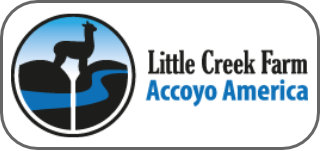Tag: "lice"
- Merino sheep infested with lice (Bovicola ovis) and with 8 months’ wool were hand jetted with a commercial spinosad formulation or treated with an α-cypermethrin backline product to examine the effect of long wool treatment on lice numbers and wool damage, relative to untreated controls. Mean lice numbers were reduced significantly (P < 0.05) by treatment and then remained relatively constant until shearing 20 weeks later. Treatment with either product resulted in significant improvements in mean clean and greasy wool cut, yield, staple length, both visually assessed and measured colour, and the proportion of fleeces classed into the main fleece line. There was no significant difference between the two treatments in either efficacy in reducing louse numbers or on production characters. Wool rub score and cotting assessed on the sheep increased slightly after treatment and then did not change until shearing whereas both scores increased significantly in the untreated group. There was a strong relationship between the visual rub score and the loss of wool at shearing, indicating that rub score can be a good predictor of lice-induced reduction in fleece weights. more »
- The most important ectoparasites infesting/infecting alpaca (Vicugna pacos) and llama (Lama glama) are reviewed. The clinical manifestation and the diagnosis of the different parasitic infections/infestations of Sarcoptes scabiei, Chorioptes sp., Psoroptes sp., Damalinia (Bovicola) breviceps and Microthoracius spp. are described as well as therapies against them. Demonstrating S. scabiei and Chorioptes sp. with available diagnostic methods are challengingly often due to the relatively small numbers of mites that may elicit clinical disease. In Chorioptes sp. infestations it has been shown that alpacas are often subclinically infested. Predilection places are between the toes and in the axillae. The variable response to modern acaricidal treatments emphazises the need of more evidence based studies. The lack of lanolin in the fibres of South American camelids may explain the poor response to topical applications of modern insecticidal/acaricidal products used on other animals. Pharmacokinetic studies of such substances are limited. Few products are licenced although several products that are used and are available for other animals are used off-label. Applying a combination of systemic and topical treatments may produce optimal results. The need to apply treatments against the mange mites more frequently and with higher dosages of some of the acaricidal substances than recommended for other livestock is indicated. Lice infestations are often easier to deal with. Systemic treatment should be applied against suckling lice and topical against the biting lice. All animals in affected herds should be treated at the same time and stringent biosecurity measures following treatment is recommended to avoid re-infections/infestations. more »
- Finding ticks in our alpaca’s ears used to be our biggest problem. I did some research on how to keep the barnyard more insect free and came up with a few solutions. I know many farmers and ranchers depend on their guineas to keep ticks and other insects under control. Guinea fowl are wonderful additions to the barnyard and veggie garden. Guineas eat the larvae and nymphs that eventually turn into adult ticks. When allowed to free range, the diet of adult guineas consists of 90% bugs and weed seeds. The other 10% is the feed you provide. Using guineas is a safe alternative to chemical treatments and reduces the population of ticks. more »
- Lice infestation of alpacas is widespread in Australia, albeit at low levels, and its presence is usually detected in herds at shearing time. Lice are species specific, meaning that camelid lice only infect camelids, cattle lice only infect cattle and sheep lice only infect sheep. There are two genuses of camelid lice, namely the biting or chewing louse, Bovicola spp. (Figure 1), and the sucking louse, Microthoracius spp. The former genus of lice feed superficially on the skin, the latter penetrate the skin and feed on tissue fluids. more »
